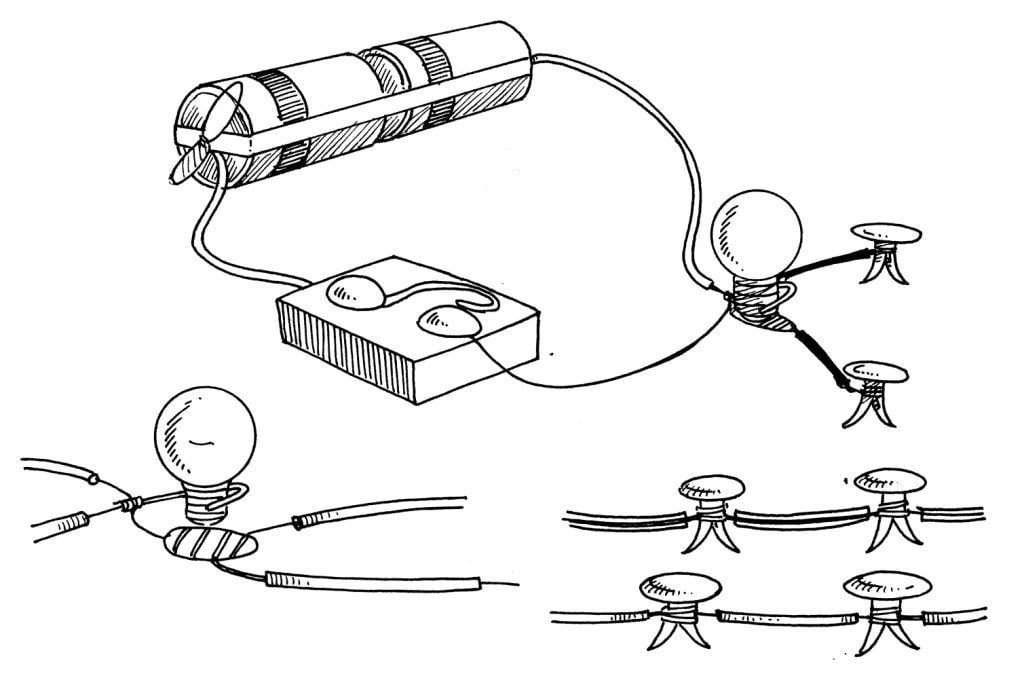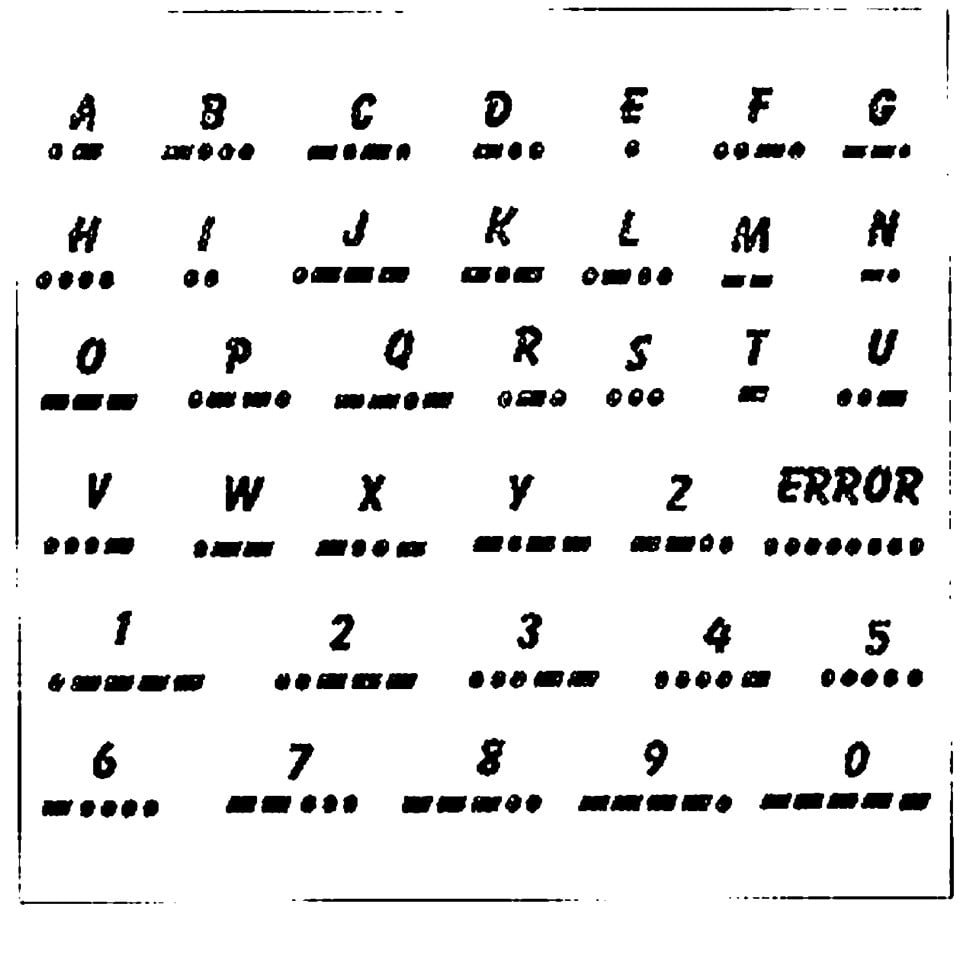

With the help of this experiment you can construct your own Morse Code Station.
Things Required:
Four “D” cells in battery holders
Two torch bulbs in lamp holders
Two switches
Four brass fasteners
Plenty of connecting wire with ends stripped bare of insulation
Directions:
Assemble two separate Morse code stations that look like this:
Next, place the two stations at different locations and connect them by wire. Begin by setting them up side-by-side. This will make solving any sort of connection problem much easier and quicker.
Use two lengths of connecting wire to attach the stations as shown here.
If this short connection works, you’re ready to expand. Use more connecting wire and place the stations at opposite ends of your room. Do the transmitters still work? If so, you’re ready.
Ask an adult to help you set up a pair of wires that will connect two stations that are placed in different rooms of the house.
THE MORSE CODE
Make two photocopies of the Morse code sheet below. Keep a copy by each station.
Below each letter and number is the code that represents it. The circles are “dots”. A dot is transmitted by a quick ON/OFF press or the switch. The small rectangles are “dashes”. A dash is transmitted by a longer ON/OFF press.
This code was developed by a man named Samuel Morse. In 1838, Samuel invented the first device that could send coded messages along electric wires. Soon everyone was calling these wire messages Morse code.
This Is What Happens:
When either switch (called a key by Morse code people) is closed, the double-lamp circuit becomes complete. The current flows from the closest pair of cells through the large connecting loop of wire (that is strung between the stations). Flowing along this wire, the electricity lights both lamps. By monitoring your own bulb, you can make sure your message has been sent to the other station. When you see a light, they will see a light.

